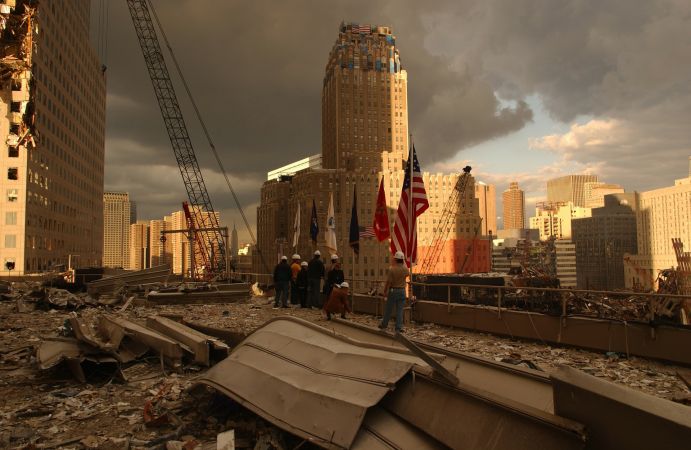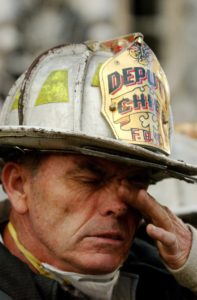
20 Years: Reflecting on Our 9/11 Disaster Response Efforts
Enormous energy…Cooperative effort…Outpouring of help…Adrenalized…Amazing to witness…Transformative…
These are just a few of the words and phrases used by Trauma Recovery/HAP volunteers and former staff when asked to reflect on our disaster response following the attacks on the World Trade Center on September 11, 2001.
Even after 20 years, the overwhelming recollection is that every effort was made to get help to those in need; to the survivors, those who lost loved ones, the first responders, the rescue workers, and clean-up crews. It was truly an “all hands on deck” disaster intervention.
Within a week of the attacks, HAP organized and was ready to host several trainings in New York and New Jersey, from Basic EMDR trainings and EMDR refresher courses to specialty trainings like “EMDR Protocol for Recent Events: EMDR Applications to Terrorism and Disaster.”
Longtime HAP volunteer Jim Knipe shared what he calls a “picture memory” that has stayed with him all these years, of an EMDR refresher training that was standing room only. In a large auditorium, every seat was full, people lined the walls and spilled through the doorways, eager to renew their understanding of EMDR and eager to help their community heal in the wake of 9/11.
During these initial weeks, some 500 EMDR trained therapists came forward to offer pro-bono group and individual sessions. Through their service, hundreds of survivors received up to 4 sessions of EMDR free of charge.

With volunteers at the ready, HAP took on the difficult, but necessary role of establishing procedures for providing pro-bono therapy in a disaster setting. Standards were put in place for how many EMDR sessions would be provided free of charge, both for the clients’ well-being and the clinicians. The groundwork was laid for a new HAP program, initially referred to as the Disaster Mental Health Recovery Network, and now known as the Trauma Recovery Network.
In addition to the humanitarian efforts being carried out, a group of four individuals recognized the opportunity for important research to be done regarding EMDR as a post disaster treatment tool. A study was carried out on a subset of 65 clients, collecting pre- and post-data and documenting significant positive gains on a range of outcome variables, including a substantial decrease in standardized measures of anxiety, depression and PTSD symptoms.
In 2005, this research was published in the International Journal of Stress Management:
The group concluded that EMDR is a useful treatment intervention, both immediately after a disaster and later as well, and that the longer treatment is delayed the greater the level of disturbance experienced by clients. They also discussed the problems in conducting research during mass disaster response situations.
While other studies had been done demonstrating the efficacy of EMDR in disaster settings, this was the first study focused on the use of EMDR as an early intervention. It was also the first study evaluating an intervention for a man-made disaster (as opposed to a natural disaster) of the magnitude of September 11th.
Learning from the response to 9/11, along with later large-scale disasters such as Hurricanes Katrina and Rita, HAP staff and volunteers have worked to grow and strengthen the Trauma Recovery Network, as the most effective and cost efficient way to respond to major disasters. Our local TRN® chapters with EMDR-trained members are ready to respond when emergency need arises, prepared in advance and continually working to form connections with other local emergency responders before crisis happens.
Special thanks to Carol Forgash, LCSW, Dr. Jim Knipe, and Dr. Barbara Korzun for their help with this reflection. Even after 20 years, we want to thank all our volunteers and staff who came together after 9/11 and worked tirelessly to help bring trauma healing and hope to hundreds of individuals in need.